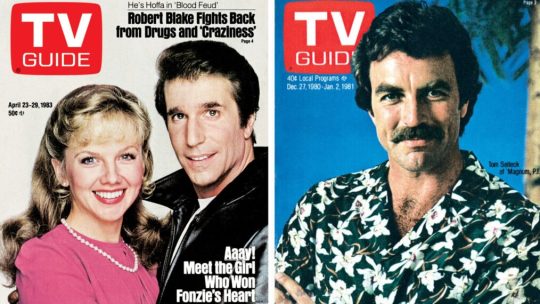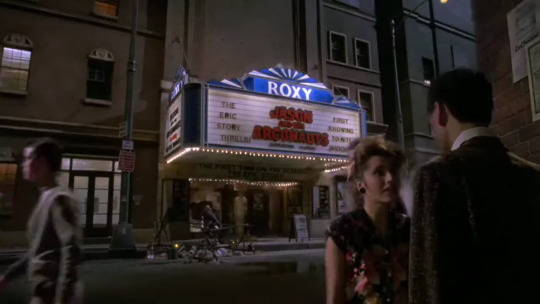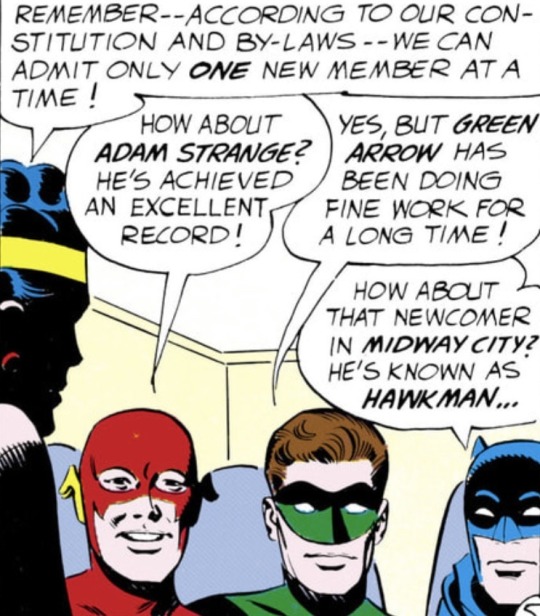#timeline: 1960s
Explore tagged Tumblr posts
Text




#poll#smash or pass#smash or pass poll#tumblr polls#class: classic muscle#timeline: 1960s#shelby gt500 eleanor#ford shelby
26 notes
·
View notes
Text
Little Shop of Horrors takes place sometime in the early 60s, but it's hard to pin down the exact year. A radio broadcast mentions President Kennedy, so that narrows it down to 1961, 1962, or 1963. During the song Feed Me (Git It), one of the offers Audrey II waves in Seymour's face is a "guest spot on Jack Paar." Jack Paar hosted the Tonight Show from July 29, 1957 to March 30, 1962. The opening line of the movie says that the events took place on the 23rd day of the month of September, so if we assume Jack Paar was still on the air when Audrey II mentioned him, then 1962 and 1963 are off the table, meaning is has to be 1961, right? Well, after Seymour kills Mr. Mushnik allows Audrey II to kill Mr. Mushnik, we get a short montage of offers and contracts and magazine covers to establish that Seymour's star is rising. One of the covers is a TV Guide for the week of October 6 - 12.

October 6th was a Sunday in 1963, not 1961, so that complicated things until I googled existing TV Guides and learned that they don't start the week on Sunday, but Saturday instead.

April 23 - 29, 1983 (Saturday to Friday) December 27, 1980 - January 2, 1981 (Saturday to Friday)
October 6 - 12 was a Saturday to Friday in 1962.
If we assume Audrey II just pulled the first famous talkshow host name it could think of regardless of whether or not he was still on the air, then 1962 remains our best bet because in the director's cut ending where the plants take over the world there's one shot of Audrey II bursting through a movie theater marquee advertising Jason and the Argonauts, a Ray Harryhausen movie which premiered June 13, 1963.

Little Shop of Horrors starts on September 23, 1962.
Seymour gets his face on the cover of Life and the TV Guide the following month.
Audrey II would hit store shelves just in time for Christmas, spreading around the country faster than hula hoops and the Twist, taking over the world sometime in the new year.
#little shop of horrors#lsoh#audrey ii#seymour krelborn#1960s#1961#1962#1963#jfk#john f kennedy#president kennedy#kennedy#60s#the 60s#musical#timeline
783 notes
·
View notes
Text
Mmmmm thinking about mafiafell…. Writing chapter 7….. thinking about names….Don fell… mob fell and mafiafell r pretty basic so that’s why….
Hm, I love getting inspired and analyzing characters. DF! Sans is just Red, DF! Papyrus is just Papyrus, DF! Gaster is only Wings to his grandchildren…. Oh yes, we’re using that theory here, I enjoy the dynamic seeing as to how the timeline played out. Really young Papyrus is a bit manipulated by Gaster, when Sans pushed his brother away Wings took it as an advantage…. when Papyrus was cripped and seemingly perma-disabled only then did Sans began to care. So Gaster mentored Sans in welding to makeshift him a proper jaw and took Paps another year before he could speak properly...
His speech pattern still remains disjointed so many times he’s removed from the front lines and Sans reserves all the temper of the 3.
And to think Maria is what catches the attention of the most angry skeleton! She and him both die, hm. Say 1950. I do so enjoy torturing them mwah ahaha.
1890-1950 MAFIAFELL TIMELINE
1890: First minster emergence from barrier, remain complacent in scattered regions across Canada
1896: Monster General takes first human soul on surface, first evidence of monsterkinds presence found in Canada. Stories and “myths” of creatures circulate. Thanks a lot Jeff.
1898: Increased tensions lead to monster communities forming isolated settlements near major trade centers (like [REDACTED]). Government begins recognizing monster populations.
1901: Monsters establish borders as recognition grows. American industrialists exploit monster labor for dangerous factory work, deepening resentment.
1908: Monsters migrate closer to cities and soon forms disrupt. Humans are viewed as economic competition.
1912: Monster raids on human lands increase hostility. In retaliation, the United States military experiments with living monster magic to counteract monster defenses.
1914: Tensions reach a boiling point, IB by real life European imperialism U.S. wages war against the monster kingdom under ideal of protecting American interests.
1916: The Siege of Underground occurs. Monster military collapses, King Asgore killed, and monster communities forcibly relocated to reserves for human study.
1917: Monsters granted “limited citizenship,” through heavily restricted rights. Former monster territories are absorbed into U.S. industrial zones and monsters begin to assimilate to human culture.
1920: President Kempt Warren promises normalcy but fails to resolve monster inequality. Magical weaponry development surges as corporations recognize its profit potential and smuggling of monsterkind begins in urban areas.
1922: Prohibition begins. Black markets thrive, selling magics, consumer goods, fleshtrade, and new monster alcohol. Organized crime explodes, involving human and monster gangs.
1924: Anti-monster sentiment fuels the rise of extremist political groups, demanding segregation and tighter restrictions. Monsters form their own unions and underground communities for protection.
1925: Early television prototypes powered by magical energy appear, revolutionizing entertainment and news. This blending of magic and technology creates a unique cultural identity.
1926: President William Cull focuses on economic growth, ignoring societal unrest. The divide between humans and monsters widens as monsters face violence, exclusion, and job discrimination.
1929: Stock Market Crash leads to the Great Depression. Monsters are scapegoated as job thieves and blamed for economic collapse.
1930: Magical weaponry and machinery technologies reach new heights, giving rise to armored cars, magic-powered aircraft, and industrial automation. Wealthy elites control most of this innovation.
1931: Prohibition ends. Human-run mafia families dominate trade in cities in exploiting magic services. Monsters partake with protection and roles of defense for human mafias.
1933: Fiere D. Roster becomes president, introducing “New Deal” to restore the economy. Monsters are largely excluded from government relief programs save for MLA(Monster Liberation Act- allows designated magic users government funding in independent merchant market.
1934(CURRENT): Monsters remain second-class citizens, confined to slums and ghettos. Cities like [REDACTED] form melting pots for poverty, crime, and societal divide. Progress in technology like magic radio, early television, and mechanized transport contrasts moral and social regression. Extremist human groups clash with monster rights activists.
1935: Monsters gain limited inclusion in labor unions, increasing political tension. Roster struggles to manage both economic recovery and societal divisions.
1936: Advances in magical medicine revolutionize healthcare but remain inaccessible to most monsters.
1938: Political radicals push for harsher policies against monsters, fueling riots in major cities. The military continues testing magic-infused weaponry, preparing for potential global conflict.
1939: With tensions escalating an arms race begins between the U.S. and other nations seeking to harness magical technologies. Canada and European powers grow wary of America.
1940: Monster-rights movements gain traction, demanding full citizenship and equal treatment. Whispers of a new global war loom as technological advancements make conflict inevitable.
1945: Supreme Court case “Arlow Trials” highlight case study of monster laborer accused of murdering human factor overseer. Explores dynamic of labor exploitation and systemic discrimination and opens perspectives for monster rights onpar with African-Americans.
1947: In the preparation for war, the HME(Human Monster Equals) act is formed giving monster same rights as humans. In the same situation as African+Americans John Crow laws are passed.
1950: WW2 erupts with America already a world power fueled by magic weaponry and advanced machinery. Monsters are drafted into the military further complicating societal role.
1950-1970: Post-war America emerges as a global superpower with magic-infused technology dominating industries. As result Canada is formed into America and no longer exists. Cultural divide shows signs of healing.
1970/Beyond: Magic becomes commercialized integrated into everyday life like television, transportation, and weapons. Monsters gradually gain equality but carry generations of discrimination and resentment.
#Donfell#mafiafell#mobfell#underfell au#undertale au#undertale fanfiction#mafiafell papyrus#mafiafell sans#lore#spoiler#story#timeline#Sovls Unrelated🩶#autism#selfship#selfshipper#also kinda used this as lore posting my bad#uf sans#sans#novice writer#writer#ao3 writer#writers on tumblr#history#decade: 1930s#1930s#1940#1940s#1950s#1960s
21 notes
·
View notes
Text

Really delightful to me that the first person to suggest Ollie join the Justice League is Hal
#mine#Justice League of America (1960) 4#hal jordan#barry allen#bruce wayne#diana prince#pretty sure that by Post Crisis timeline they wouldn’t have met yet#but whether they’d had an interaction in comics at this point?? no idea lol
58 notes
·
View notes
Text
The chapter of Royston Ellis meeting the Beatles is so wild.
He first hits on George at the Jacaranda. George responds to this with a casual “oh, you’d love my friends” and brings him to Gambier Terrace:
Also dropping into the Gambier Terrace pit was a special guest, Royston Ellis, “King of the Beatniks.” The bearded bard, who featured in TV documentaries and press articles whenever an offbeat teenage angle was needed, was in Liverpool to read his poetry at the university on June 24/25, and he swiftly found himself drawn into the Beatles’ company. The conduit was George, who (with nothing else to do while John, Stu and Paul were in school) was hanging around the Jac when the wandering coffee-bar poet traipsed in, drawn by hip radar to “the happening place.” Avowedly “trying everything,” Ellis was an active bisexual in this period of his life and he took an immediate fancy to George: “He looked fabulous with his long hair and matelot-style striped T-shirt, very modern, which is why I deliberately spoke to him. I was nineteen and he was seventeen and we clicked right away.”15
George took Ellis, his typewriter and his duffel bag back to Gambier Terrace to meet John and Stu. A rapport was quickly established and Ellis was invited to “crash” for a few days—yet another occupant for the filthy back room.
Then Ellis hits it off with John and Stu and wants them as a backing band:
Ellis says he developed a particular rapport with John and Stuart and that they discussed poetry, art and London. When he left, they spoke of doing it again sometime: “We were talking about how I wanted a band to come to London and back me on my Rocketry performances, and they were thrilled at the idea.” Art school studies finished the following Friday, July 1, marking the end of Stu’s fourth year and John’s third and last because the college was waving him goodbye. The exam results, when they came through on August 1, were just as expected: John failed and was out, Stuart passed the NDD, for which he received a certificate. The option was there for him to do a fifth year and attain the highest available qualification, the Art Teacher’s Diploma (ATD), akin to a degree and entitling him to become a teacher … but both he and John were pondering a period as prospectors, and doing something again with Ellis was a definite possibility.
So much so, Ellis is responsible for the first* two mentions of the band in the newspaper:
As for Ellis, so much was he enthused by the possibility of appearing with them again that he soon got the Beatles their first mention in a music paper. It was the July 9 edition of Record and Show Mirror, where a supercilious little article about “the bearded sage of the coffee bars” ended “he’s thinking of bringing down to London a Liverpool group which he considers is most in accord with his poetry. Name of the group? ‘The Beetles’”
….A born publicist, Royston Ellis knew how to manipulate a follow-up, writing a letter for publication that clarified a point in the first. He expressed his intention to find a group that would join him on TV appearances with Bert Weedon and the Shadows, and reiterated, “For some time I have been searching for a group to use regularly, and I feel that the ‘Beetles’ (most of them are Liverpool ex-art students) fill the bill.”
John and Stu decide to go to London on their own to join Ellis…but then chicken out:
By July 10, at the end of his three-year art school vacation, John had arrived at a key decision in his life: he would try to earn his living from the guitar. “I became a professional musician the day I got a red letter from the art college saying ‘Don’t bother coming back next September,’ ” he later said.31 Cyn would remember, “John decided that this [music] was very definitely the life for him. All the ideas that everyone else had for him of making an impact on the art world faded into the back of beyond with incredible rapidity, and with almost no regret at all. Aunt Mimi was distraught. Her view of his future couldn’t have been blacker at that time.”32
These events coinciding, it seems John and Stu decided to head south and hang out with Royston Ellis. Allan Williams is emphatic on the matter: he says John and Stu “split the Beatles and went down to London.”33 Norman Chapman would remember Stu asking him for a lift through the Mersey Tunnel one day so he (or he and John) could hitchhike to London—“They wanted to go down to London and become involved in this poetry-music scene.” Beat poets led a nomadic life by definition. Ellis lived for periods in all sorts of places, but his main base was still his parents’ house, at 31 Clonard Way, Hatch End, Pinner, Middlesex, a pleasant detached villa with the name Denecroft. This was the address he gave John while staying at Gambier Terrace. When Ellis arrived home one day his mother said he’d missed a visit from his “beatnik friends from Liverpool.” He never knew how many or who had come, but—as insane as it appears—John and Stu (and/or as Ellis always thought—hoped—George) had hitched the best part of two hundred miles, taken the trouble of locating his house in leafy Metroland, not stayed or left a message and then gone home again, never returning or making further contact. It makes no sense, but there it sits, illogical and incomplete.
Allan Williams remembers them being “back in Liverpool within a week, because it didn’t work out,” at which point the Beatles “reformed” as if they’d never been away. With bookings only every Saturday, it’s conceivable they did all this without missing one, and perhaps that was always the intention. However, while three independent witnesses (Ellis, Williams and Chapman) all remember something happening, none of the Beatles ever mentioned it—though in their interviews they talked with candor about everything. So it must remain in doubt, an intriguing puzzle unlikely to be solved.
There are two additional curiosities that may or may not be incidental. One is that, in the last days of July, a group of Liverpool art school students, apparently including John and Stu, went to London (or tried to go) to see a Picasso exhibition at the Tate Gallery. Second, and most fascinatingly, a set of photographs taken at this very time (mid-July 1960) in Stu and John’s studio-bedroom-slum at 3 Gambier Terrace includes several people they knew but not John and Stu themselves—perhaps because they were on the Hatch End trip. It was published on July 24 in the national Sunday rag the People in a sensation-splash headlined THIS IS THE BEATNIK HORROR. It’s as if a man on a flaming pie was pointing down at Flat 3, Hillary Mansions, Gambier Terrace, Liverpool 1. In six months, three Beatles moved in and the fourth was hanging out, the nation’s best-known beat poet had come here to get them high, and now, when a Fleet Street journalist and photographer were looking to substantiate a load of old tosh about dirty beatniks—reportage that could have been cooked up anywhere in the country—they landed in Stu and John’s room.34
Though hugely amusing, the feature had one unfortunate side-effect: because the address was given (a “three-roomed flat in decaying Gambier Terrace in Liverpool”) and some of the occupants (“well-educated youngsters”) were named, the landlord gave the tenant, Rod Murray, notice to quit. On August 15, everyone—Rod, Diz, Ducky, Stuart, John and sundry other bodies who’d joined them—would be out on the street.
—Mark Lewisohn’s Tune In, Ch 15 (May 31–Aug 15, 1960)
And Lewisohn is just like yup nothing to see.
So what the hell happened here? Was it just a school trip? Or was it a deliberate split?
#royston ellis#beat poetry#beatniks#tune in#1960#early liverpool#bug mysteries#i think about this once a week and just found the bit again#mine#mark lewisohn#reading tune in#prebugs#*i think they may have found an earlier mention since tune in printing#i have a june newspaper clip date in my timeline#john and stu#young george#june 1960#queer bugs#reading riding so high#joe mentions the dates of royston’s liverpool university appearance#june 24 1960 and davies says the first beetles mention in the newspaper is june 11#so theres some conflict there when was the first#just learned royston ellis died earlier this year#but kerouac website writers reached him in 2020 and he still claimed they got the BEAT ideat in the name from him#theyve got a clipping from june 5 with silver beetles#but lewisohn references a june 2 clipping with the A (beatles)#so thats too early for royston maybe they were deciding and flipflopping he helped settle on one i can see that#lalala i cant read its first mention in a music paper rather than a general newspaper
105 notes
·
View notes
Text
random idea: vox learned he can replace his head with newer models because of his first fight with alastor
#man fuckin took the guy's head off#only question is did he bite it off...#redlady speaks#hazbin hotel#vox#alastor#their timeline is really vague#but i like to think they were partners through the 1960's and then had the big falling out#and continued feuding on and off for the next 50 years until alastor's seven year disappearance#hazbin posting
26 notes
·
View notes
Text







Chronographia. La forma del tempo nei libri d'artista
— Progettazione grafica 1, ISIA U 2023/24
Chronographia è un’indagine visiva sul tempo nei libri d’artista tra anni ’60 e ’70. Attraverso una selezione di opere, esplora il tempo come esperienza, ritmo e trasformazione. Le pagine, riorganizzate in ordine cronologico, creano un flusso visivo tra arte concettuale e narrazione frammentata.
2 notes
·
View notes
Text
alright yall its time for Stargate Origins. lets kick some nazi ass w space gates
#went from 1994 to 1960 to 2018#my spreadsheet is all over the movie timeline#stargate#stargate origins
6 notes
·
View notes
Text
Im so so curious about what people think about this- When do you think PLvsPW took place in the Ace Attorney timeline?
-First option- After Stolen Turnabout but before Bridge to the Turnabout
- Second option- After Bridge to the Turnabout and at some point before AA4
I also asked this on twitter (found here: https://twitter.com/astrofiish/status/1766471999461720481?s=20 ) but I was also curious about what yall think on tumblr!
#plvspw#plvspwaa#plvsaa#professor layton#ace attorney#also ignore the massive timeline problems between both franchises for a bit pls!!!#like i know that layton is like in the 1960s but aa is in the 2010s#but specifically in the aa standpoint: what do u all think?
17 notes
·
View notes
Note
daf 33? :D




16 notes
·
View notes
Text
NGL watch me RESSURECT Gwen Stacy as Peter's love interest/best friend with my bare hands in the main timeline.
#u think im joking im not#yall wanted brain rot? but what do u actually know of it?#ive had a historical timeline post about gwen baking in my drafts for MONTHS#when my drawing skills level up its OVER FOR Y'ALL#1960s Gwen got done so dirty by the writers that hated her and me and stan lee were on the same page#fuck the clone arc we going whole hog in this bitch#marvel#spider-man#gwen stacy#peter parker
4 notes
·
View notes
Text
spending my unemployment wisely (watching psycho 1960 thinking about how it would have absolutely reworked beaus brain chemistry)
#like I know his ass caught a rerun of it on the television when he was definitely too young to watch it#getting in trouble but it was worth it bc so much awoke in him#I haven’t watched the other movies that would be out in the LB timeline tho#horror film….anthony perkins…..beaus life was changed forever#I need to watch more black and white old movies something abt the energy of them#the pop culture angle in LB that isn’t in RR im having so much fun#esp thinking about sexuality and queerness when you grew up in the 60s/70s#need the official list of Beau Celebrity Crushes NOWWW#I have complicated thoughts about the film and queer coding and psychology but like. its from 1960 I have to be like#acknowledge that but also this is 1960 I fear#beaus feelings watching it as a child vs an adult would be complex too and that’s so interesting to me !!!!!!!!!!!!!
4 notes
·
View notes
Text
Showing Edgar Allen Poe "Slay the Princess". Showing H.P. Lovecraft "Holes" by Junji Ito. Telling Antoine de Saint-Exupéry about how much people love "The Little Prince" in the modern age. Asking J.R.R. Tolkien what wording I should use for a specific situation. Asking Daniel Keyes why the HELL he wrote "Flowers for Algernon", because that shit is messed up
#I'd also tell Lovecraft about the Civil Rights Movement of the 1960s#but who knows how that'd alter the timeline
0 notes
Note
The World Trade Center Orin
The what???
#ooc: that was built LATE 1960s i believe so hes still clueless#christian borle and friends rp#asks~#lsoh rp#non canon timeline!!~
0 notes
Note
your portrayal of dick is really well thought out. you have this deep backstory and reasoning for everything you do with him and as canon character with so much history that can be a little intimidating for some people but you take it on and it seems almost effortless. as a batman enjoyer and follower i've learned more about dick as a character from you lately just by following your blog and talking to you than i have in years. that's why i follow and that's why i stick around. and of course the donut cheeseburger debate. can't forget about that.

but also -flailing omg-
#Communication#therebetterbepie#outofinspiration#I started with the 1960s Teen Titans comics#and just kept reading from there#putting the timeline together was a bitch and a half let me tell you XD
1 note
·
View note
Text
Official Timeline
1935: Elvis is born
1943: Elvis meets Vriska Serket (his archnemisis)
1958-1960: Elvis serves in The War (unspecified)
1977: Elvis gets lost in the desert. The Las Vegas government fakes his death to cover up his disappearance
1979: Elvis starts eating beetles and lizards
1989: Elvis eats Paul McCartney
2005: Elvis is trapped in The Orb by the Evil Wizard Saruman
2025: Elvis finds Las Vegas and starts a [tumblr]. He has yet to leave Vegas (no matter how hard he tries)
(All of Elvis's normal life happened intermittently)
1K notes
·
View notes